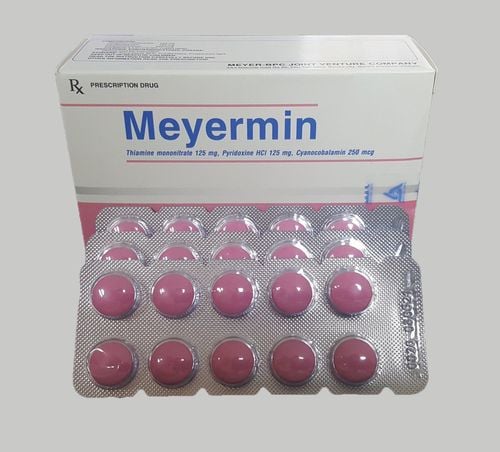This is an automatically translated article.
The article is professionally consulted by Master, Doctor Doan Ngoc Quynh Tram - Pediatrician - Neonatologist - Department of Pediatrics - Neonatology - Vinmec Nha Trang International General HospitalAccording to the World Health Organization, children of different ages respond differently to height and weight, as shown in the standard height and weight table for children. Therefore, measuring height and weight plays a very important role in assessing the child's developmental status. In this article, we will learn about the method of measuring children's height and weight to monitor the risk of malnutrition.
1. Growth in height and weight for age in children
Height and weight in children change according to each stage of child development as follows:Newborns have a rapid increase in height and weight, when a child is 1 year old, the weight can increase one and a half times compared to the period just born. The height of a child at 1 year old will increase by about 25cm compared to that at birth and reach about 75cm. Children turning 2 years old can increase their height by 10 cm and reach an average of 85 cm to 86 cm. Children from 10 years old and above will increase in height by an average of 5 cm per year. Therefore, measuring children's height and weight periodically helps you to monitor the physical development status of children, monitor the risk of overnutrition causing weight gain, the risk of malnutrition in children.
2. Children's height and weight table
How tall is a 1 year old child? This is probably a question asked by many parents in order to have the right nutrition for their children to develop up to standards.According to the World Health Organization, the normal height and weight levels for age are shown in the following table of height and weight of children:

Bảng chiều cao cân nặng của trẻ
Research from scientists shows that the growth of height and weight, especially height, tends to decrease gradually as children grow up. That means you need to provide enough nutrition and energy for children to help their growth skyrocket at the pre-puberty stage. In addition, you need to regularly measure the child's height and weight to monitor the child's development and nutritional absorption.
3. Steps to measure children's weight and height
Measuring the weight and height of the child is done according to the following steps:3.1. Weight measurement You use a weighing instrument that is one of the types of scales such as: trough scale, swing balance, hanging scale, electronic scale... must ensure sensitivity and accuracy.
You measure the child's weight according to the following process:
You proceed to adjust the weight to the balance position after each weighing. Test the scale with an object of known weight to check the accuracy of the scale. You should measure your child's weight at a certain time of the day, preferably in the morning, when he has just woken up, after urinating or defecating or when he has not eaten anything. You should wear less clothes for the child when weighing, do not wear shoes, hats and heavy objects on the child. In the case of weighing children with a scale, you should let the child stand in the middle of the scale, eyes looking straight and not moving. You read the weight measurement results by looking straight at the center of the scale, read the results when the balance is balanced and record the weight results in kg with 1 decimal (eg 9.6 kg..) 2.3. Height measurement Assessment of nutritional status is based on the results of measuring the child's height and weight, so after measuring the weight, you need to carry out the process of measuring the child's height. For children under 2 years old, you measure the lying length and the standing height for children older than 2 years old.
You measure the child's standing height according to the following steps:
You use a measuring tool which is a wooden ruler, a microtoise ruler with a minimum division of 0.1 cm. You need to remove shoes, sandals, personal tools for the child before measuring the height. Instruct the child to stand with their feet together, with their backs to the ruler, and make sure the points touch the measuring plane: shoulders, occipitals, heels, belly, and buttocks. The measuring axis coincides with the body axis, the eyes look straight and the two hands hang on the sides. You use the eke close to the top of your head, perpendicular to the ruler and read the result in cm with an odd number. Measure the length of the child lying down according to the following steps:
Place the ruler on a stable, horizontal surface (on a table or on the floor...) and remove the child's shoes and personal items before measure. The child is placed supine on the ruler, you proceed to keep the child's knees straight, the heels touching, ensuring 5 touch points: abdomen, heel, occipital, buttock and shoulder are close to the ruler. Make sure the axis of the child's body coincides with the axis of the ruler. At the same time, use the other hand to bring the movable eke of the ruler close to the foot, the foot is vertical and perpendicular to the ruler. Read the result after 1 decimal place in cm. After measuring the height and weight, you can use the WHO standard height and weight table of children (the table above) to compare the results, thereby helping to assess the development status as well as the nutritional status. baby's.
4. Assessment of nutritional status based on children's height and weight measurements
Nutritional status based on the results of measuring the height and weight of children is assessed according to the following index:Z - score = (Measured size - Average number of the standard population) / SD value of the population standard

Bảng đánh giá tình trạng dinh dưỡng theo chiều cao, cân nặng
Note 1: Children with this height range are very tall. Excessive height growth can be a sign of an endocrine disorder. Therefore, children need to be examined if there is any suspicion of endocrine disorders. Note 2: Children with the Weight/age index in this boundary may be a growth deviation, but this expression is better evaluated from the Weight/Length or BMI/age index. . Note 3: The low height/age index (<-2SD) reflects chronic undernutrition or malnutrition in the past.
5. Calculate body BMI based on the child's height and weight index
Based on the results of measuring the height and weight of the child, you can calculate the BMI value to help assess the nutritional status of the child. BMI (Body Mass Index) is an index calculated from the height and weight of the body. This is an inexpensive and easy way to screen for health problems.The child's BMI is calculated according to the following formula:
BMI = Weight (kg)/ (Height (m))2
Nutritional status of the child's body based on BMI is shown in the chart after:

Biểu đồ tình trạng dinh dưỡng của cơ thể dựa trên chỉ số BMI
BMI < 5% indicates underweight, which can lead to malnutrition in children. BMI is in the range of 5% - 85%, reflecting the normal development of the child, the child's body absorbing enough nutrition, the child is healthier and more active. A BMI between 85% and 95% indicates overweight or obesity in children. A BMI above 95% indicates overweight and obesity in children. Thus, based on the results of measuring weight and height in children, you can monitor the development status and ability to absorb nutrients, thereby having a good care regimen to help the comprehensive development of children. .
For children to be healthy and develop well, it is necessary to have a nutritious diet in terms of quantity and quality balance. If children are not provided with adequate and balanced nutrients, it will lead to diseases of excess or lack of nutrients, which adversely affect the comprehensive development of children in terms of physical, mental and motor skills.
Parents should supplement their children with supportive products containing lysine, essential micro-minerals and vitamins such as zinc, chromium, selenium, and B vitamins to help fully meet their child's nutritional needs. At the same time, these essential vitamins also support digestion, enhance nutrient absorption, help improve anorexia, and help children eat well.
Please regularly visit Vinmec.com website and update useful information to take care of your baby and family.














